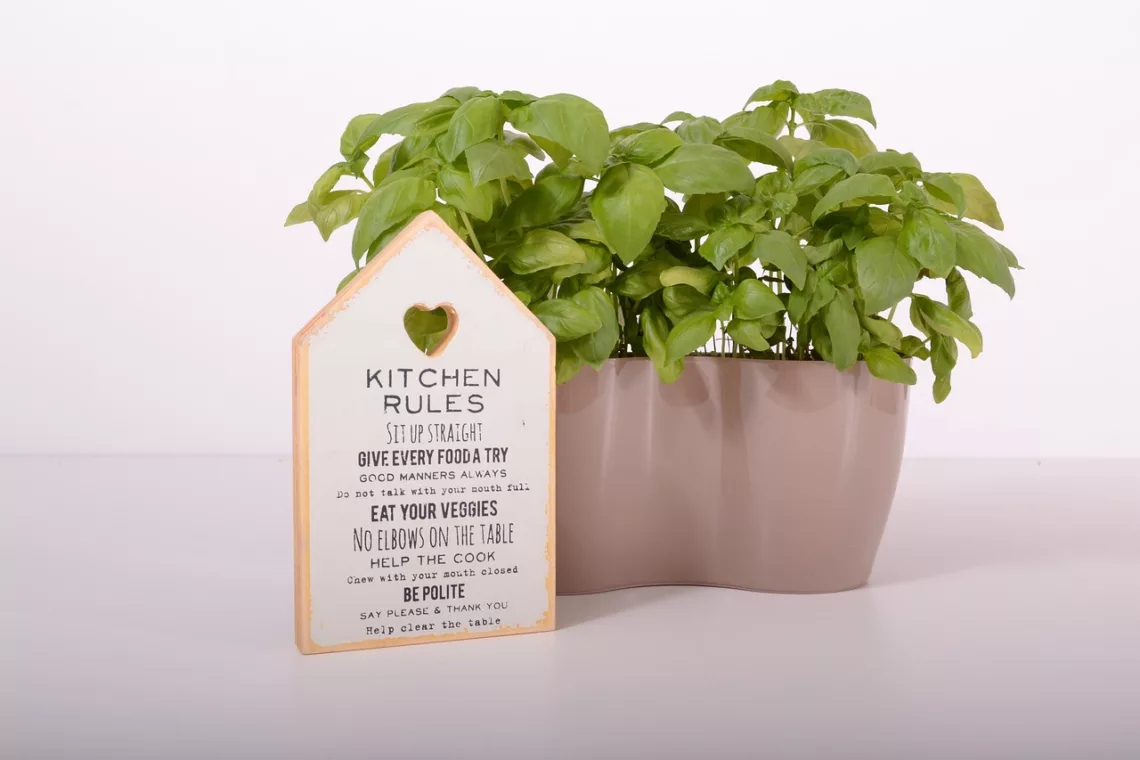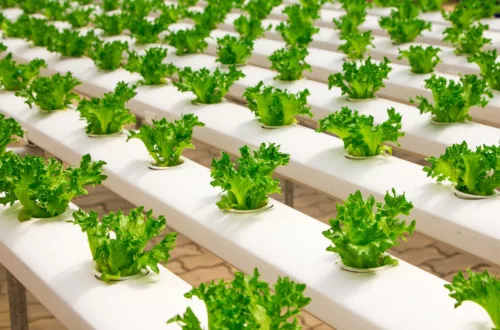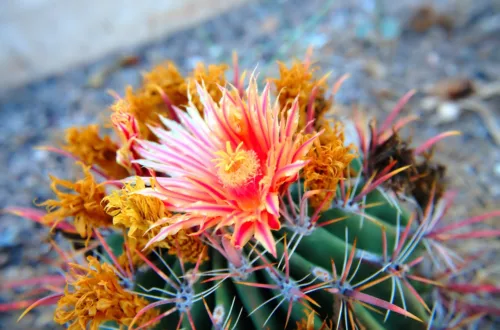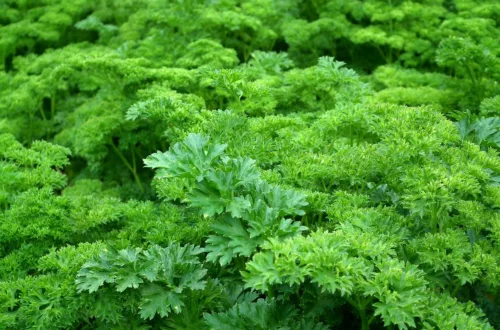Growing herbs from seeds indoors is a great way to enjoy fresh herbs year-round, regardless of the weather outside. With a little bit of planning and patience, you can have your own indoor herb garden that provides you with fresh herbs for cooking, medicinal purposes, or simply for their pleasant fragrance.
To get started, you’ll need to choose the right herb seeds for your indoor garden. Some popular herbs that grow well indoors include basil, chives, cilantro, mint, oregano, parsley, rosemary, and thyme. You can purchase herb seeds from your local garden center or online, making sure to choose high-quality seeds that are suitable for indoor growing.
Once you have your herb seeds, you’ll need to provide them with the right growing conditions. This includes providing them with enough light, water, and nutrients to grow healthy and strong. With a little bit of effort, you can create a thriving indoor herb garden that provides you with fresh herbs all year round.
Getting Started~ How to Grow Herbs from Seeds Indoors
Growing herbs from seeds indoors is a great way to bring fresh herbs into your home year-round. It’s a fun and rewarding experience, and it’s easier than you might think. In this section, we’ll cover the basics of getting started with indoor herb gardening.
Choosing the Right Herb Seeds
Before you get started, you’ll need to choose the right herb seeds. You can find herb seeds at your local garden center or online, and there are many different types to choose from. When selecting your seeds, consider whether you want to grow perennial, annual, or biennial herbs. Perennial herbs will come back year after year, while annual herbs will need to be replanted each year. Biennial herbs will grow for two years before they need to be replanted.
You’ll also want to consider whether you want to grow culinary herbs or herbs for other purposes, such as medicinal or aromatic herbs. Some popular culinary herbs include basil, parsley, thyme, and rosemary.
Understanding the Basics of Indoor Herb Gardening
Once you’ve chosen your herb seeds, it’s time to get started with indoor herb gardening. Here are a few things to keep in mind:
- Start your seeds in a warm, sunny location. Herbs need plenty of light to grow, so choose a spot that gets at least six hours of sunlight per day. You can also use grow lights if you don’t have a sunny spot.
- Use a good quality potting soil. Herbs need well-draining soil that’s rich in nutrients. You can find potting soil at your local garden center or online.
- Plant your seeds according to the instructions on the seed packet. Some seeds will need to be started indoors several weeks before the last frost, while others can be started later in the season.
- Keep your soil moist but not waterlogged. Overwatering can cause your seeds to rot, so be sure to water them sparingly.
- Once your seeds have sprouted, thin them out so that each plant has enough room to grow. You can also transplant your young plants into larger pots as they grow.
- Enjoy your indoor herbs! Use them in your favorite recipes or as natural remedies for common ailments.
With these tips, you’ll be well on your way to growing healthy, delicious herbs from seeds indoors. Happy gardening!
Seed Starting Essentials~ How to Grow Herbs from Seeds Indoors
Growing herbs from seeds indoors is a great way to get a head start on your garden and ensure that you have fresh herbs all year round. Here are some seed starting essentials to help you get started.
Selecting Containers and Trays
When selecting containers and trays for your seeds, it’s important to choose ones with good drainage holes. Seed trays or 6-inch pots are great options for starting seeds indoors. Small pots can also be used for individual seedlings.
Preparing the Seed-Starting Mix
A good seed-starting mix is essential for growing healthy herbs from seeds. We recommend using a mix of peat moss and moist soil for good drainage. This will help prevent the soil from becoming waterlogged and ensure that your tiny seeds have the best chance of germinating.
Planting the Seeds
When planting your seeds, make sure to follow the instructions on the seed packet. Some seeds need to be planted at a specific depth, while others need to be lightly pressed into the soil surface. It’s also important to plant your seeds at the right time of year. For most herbs, early spring is the best time to start seeds indoors.
By following these seed starting essentials, you’ll be on your way to growing healthy herbs from seeds indoors. Happy planting!
Optimizing Growing Conditions~ How to Grow Herbs from Seeds Indoors
When growing herbs from seeds indoors, it is essential to optimize the growing conditions to ensure successful growth and development. In this section, we will discuss the lighting requirements, temperature and humidity, and watering and drainage needs for growing herbs indoors.
Lighting Requirements
Herbs require plenty of light to grow, and therefore, a sunny location is ideal. If you have a sunny spot in your home, you can grow your herbs there. However, if you do not have access to natural light, you can use grow lights to provide enough light for your herbs to grow.
When using grow lights, it is essential to ensure that your herbs receive enough direct sunlight. Herbs require at least 6-8 hours of bright light each day. If you are using a sunny windowsill, make sure it is south-facing as this will provide the brightest light.
Temperature and Humidity
Herbs require a warm and humid environment to grow. Therefore, it is essential to maintain a temperature of 60-70°F during the day and 50-60°F at night. You can use a heat mat to maintain the temperature if necessary.
Good air circulation is also crucial for growing herbs indoors. It helps prevent fungal diseases and ensures that the herbs receive enough carbon dioxide. You can achieve good air circulation by opening windows or using a fan.
Watering and Drainage
Herbs require adequate watering to grow, but excess water can lead to fungal diseases and root rot. Therefore, it is essential to ensure that the soil is well-drained and that you do not overwater your herbs.
It is best to water your herbs when the soil feels dry to the touch. This will prevent the soil from becoming too dry or too wet. Additionally, make sure that your pots have drainage holes to allow excess water to drain out.
In summary, optimizing the growing conditions for your herbs is crucial to ensure successful growth and development. Providing enough light, maintaining the right temperature and humidity, and ensuring adequate watering and drainage are key factors to consider.
Caring for Young Seedlings~ How to Grow Herbs from Seeds Indoors
Growing herbs from seeds indoors is a rewarding experience, but it requires patience and attention to detail. Caring for young seedlings is a crucial step in the process, as it sets the foundation for healthy and productive plants. In this section, we will discuss two important aspects of caring for young seedlings: thinning and transplanting, and monitoring for pests and diseases.
Thinning and Transplanting
As your herb seeds start to germinate, you will notice that multiple seedlings may sprout from a single seed. While it may be tempting to let all the seedlings grow, overcrowding can lead to stunted growth and poor health. To prevent this, we recommend thinning the seedlings to one plant per container.
To thin the seedlings, gently grasp the stem of the weakest seedling and pull it out of the soil. Be careful not to disturb the roots of the remaining seedling. If the seedlings have developed sets of true leaves, you can also transplant them into their own individual containers. This will give them more space to grow and develop strong roots.
Monitoring for Pests and Diseases
Fungus gnats are a common pest that can affect young seedlings. These tiny flies lay their eggs in the soil, and the larvae can feed on the roots of the plants. To prevent fungus gnats, make sure to use clean soil and containers, and avoid overwatering your plants.
Another potential issue is damping off, a fungal disease that can affect new seedlings. This disease causes the stems of the seedlings to rot and collapse. To prevent damping off, make sure to use sterile soil and containers, and avoid overwatering your plants.
In summary, caring for young seedlings is an important step in growing your own herbs from seeds indoors. By thinning and transplanting, and monitoring for pests and diseases, we can ensure that our seedlings grow into healthy and productive plants.
Maintaining Your Indoor Herb Garden~ How to Grow Herbs from Seeds Indoors
Growing herbs from seeds indoors is a great way to have fresh herbs at your fingertips all year round. But once your herbs have sprouted and grown into mature plants, how do you keep them healthy and productive? Here are some tips for maintaining your indoor herb garden.
Pruning and Harvesting~ How to Grow Herbs from Seeds Indoors
Pruning and harvesting are essential for maintaining healthy and productive herb plants. Regular pruning will help to keep your plants compact and bushy, while harvesting will encourage new growth and prevent your plants from becoming too leggy.
When pruning, use sharp, clean scissors or shears to snip off any dead or yellowing leaves, as well as any stems that are growing too tall or too close to the center of the plant. You can also pinch off the tips of the stems to encourage branching and bushiness.
When harvesting, be sure to only take a few leaves or stems from each plant at a time, and avoid harvesting more than a third of the plant at once. This will allow your plants to continue producing fresh herbs for a long time.
Fertilizing and Repotting~ How to Grow Herbs from Seeds Indoors
To keep your indoor herb garden healthy and productive, it’s important to fertilize your plants regularly. You can use a general-purpose fertilizer or a fertilizer specifically designed for herbs, and follow the instructions on the package for application rates.
Repotting your herbs is also important for maintaining healthy plants. As your plants grow, they may become root-bound in their current pots, which can lead to stunted growth and poor productivity. To repot your plants, gently remove them from their current pots and transplant them into larger pots filled with fresh garden soil.
With these tips for maintaining your indoor herb garden, you can enjoy fresh, flavorful herbs all year round. Just remember to prune and harvest regularly, fertilize as needed, and repot your plants when necessary for the best results.
Enjoying Your Harvest~ How to Grow Herbs from Seeds Indoors
Congratulations! You have successfully grown your own herbs from seeds indoors. Now it’s time to enjoy the fruits of your labor. Here are some ways to use and store your herbs.
Using Fresh Herbs in Cooking
Fresh herbs are a great addition to any meal. Lemon balm and sweet basil are some of our favorite herbs to use in pasta sauce. Simply chop them up and add them to your sauce for a burst of flavor. Culinary herbs like thyme and rosemary are great for seasoning meats and vegetables.
When using fresh herbs in cooking, it’s important to remember that they have a more delicate flavor than dried herbs. Use a light hand when adding them to your dishes to avoid overpowering the other flavors.
Drying and Storing Herbs
If you have more herbs than you can use fresh, drying and storing them is a great way to preserve them for later use. To dry your herbs, simply tie them in small bunches and hang them upside down in a warm, dry place. Once they are completely dry, remove the leaves from the stems and store them in an airtight container.
Dried herbs are great for seasoning soups, stews, and sauces. They also make a great addition to homemade spice blends. Our favorite way to use dried herbs is to make herb-infused oils and vinegars. Simply add a sprig of your favorite herb to a bottle of oil or vinegar and let it infuse for a few weeks. The resulting oil or vinegar will have a delicious, herbal flavor that is perfect for salads and marinades.
Growing your own herbs from seeds indoors is a great way to take control of your own food and add fresh flavors to your meals. Whether you prefer to use fresh or dry herbs, there are endless possibilities for using your favorite herbs in the kitchen.
Advanced Tips and Tricks~ How to Grow Herbs from Seeds Indoors
Expanding Your Indoor Garden~ How to Grow Herbs from Seeds Indoors
If you’ve mastered the basics of growing herbs from seeds indoors, it’s time to expand your indoor garden. One way to do this is by experimenting with different herbs. While some herbs are easier to grow than others, it’s always worth trying new ones to see what works for you. Late spring and late summer are the best times to start growing herbs indoors, as they coincide with the natural growing season. Some of the best herbs to grow indoors include basil, chives, cilantro, parsley, and thyme. These herbs are not only delicious, but they are also some of the easiest to grow.
Another way to expand your indoor garden is by trying new techniques. For example, you can try growing herbs from cuttings instead of seeds. This is a great way to propagate tender perennial herbs like rosemary, sage, and thyme. You can also experiment with hydroponic systems, which allow you to grow herbs with much less soil and water than traditional methods.
Troubleshooting Common Problems~ How to Grow Herbs from Seeds Indoors
Even the most experienced indoor gardeners run into problems from time to time. Here are some common issues you may encounter and how to troubleshoot them:
- Poor germination: If your seeds are not germinating, it could be due to low light levels or soil that is too wet or too dry. Make sure your seeds are getting enough light and that your soil is moist but not waterlogged.
- Leggy plants: If your plants are growing tall and spindly, it’s a sign that they are not getting enough light. Move them closer to a window or invest in some grow lights.
- Yellow leaves: Yellow leaves are a sign of overwatering or nutrient deficiencies. Make sure you are not overwatering your plants and consider adding some fertilizer to your soil.
- Pests: Indoor plants are not immune to pests like aphids, spider mites, and whiteflies. If you notice any signs of infestation, try spraying your plants with a mixture of water and dish soap or invest in some insecticidal soap.
By following these advanced tips and tricks, you can take your indoor herb garden to the next level and enjoy fresh herbs all year round.
Conclusion~ How to Grow Herbs from Seeds Indoors
Growing your own herbs from seeds indoors is a fun and rewarding experience. We hope that this guide has been helpful in getting you started on your indoor herb garden journey.
Remember to always read the seed packet instructions carefully and provide your herbs with the right amount of light, water, and nutrients. If you’re new to gardening, start with easy-to-grow herbs like basil, parsley, and chives.
In addition, it’s important to choose the right potting soil and containers for your herbs. We recommend using a high-quality potting mix that is specifically formulated for herbs. You can also use recycled containers or mason jars to add a unique touch to your indoor garden.
If you’re concerned about privacy, you can grow your herbs indoors without worrying about prying eyes. Indoor gardening is a good way to keep your gardening activities private.
Finally, if you’re looking for a good way to get started with indoor herb gardening, check out Bonnie Plants. They offer a wide variety of herb plants and seeds that are perfect for indoor gardening.
Happy gardening!







